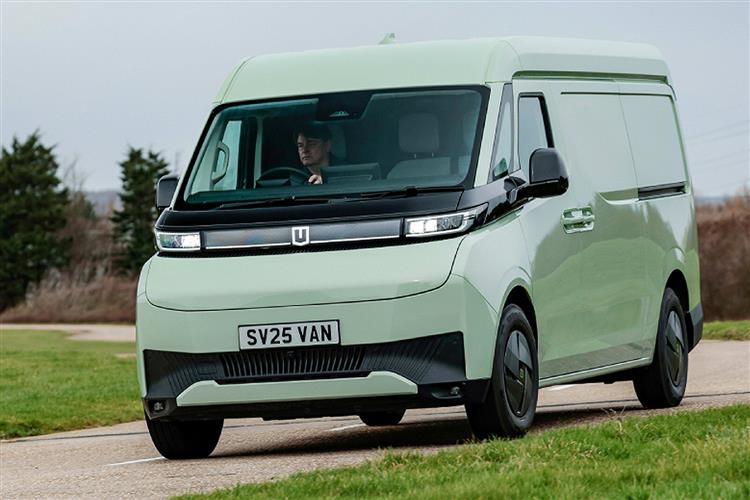FUTURE-PROOF? (some text hidden) --NONE--
By Jonathan Crouch
Chinese maker Farizon re-imagines what a medium-to-large-sized EV van can be. Jonathan Crouch takes a look.
Ten Second Reviewword count: 45
Is your business ready for the Super Van? That's what this model claims to be, the Farizon SV. It's for those whose needs lies somewhere between a medium and large-sized commercial vehicle, an all-electric LCV that claims to be the most advanced van yet made.
Backgroundword count: 208
In a move reminiscent of Clark Kent and Superman, Chinese commercial vehicle brand Farizon has taken the humble large delivery van, spun it into something quite different and created, you've guessed it, the Super Van. No really: it's actually called that. Well actually, it's called the Farizon SV, but that's apparently what those two letters stand for. This is the kind of van you might have seen on films that picture life 50 years from now. And it's not just the looks that are futuristic. The SV, which is all-electric of course, sits on a so-called GXAM chassis which Farizon immodestly says is the world's most advanced eLCV platform. It uses drive-by-wire technology, innovative cell-to-pack battery design and it's the lightest and most aerodynamic large van ever made. We say large; size-wise it sits between the medium and the large van segments. Farizon (known in China as the Zheijang Geely Farizon New Energy Commercial Vehicle Group) is backed by the Chinese conglomerate Geely (think Volvo, smart and Lotus); and it's sold in Europe by the uber-ambitious Saudi Arabian-based distributor Jameel Motors, who work with 20 brands in eight countries. Lots of reasons then, why you'll be hearing a lot more about the Super Van. Let's take a look.
Engines and Tech Specword count: 269
There are no half measures here. There's a mainstream choice of two batteries - 67kWh and 83kWh lithium ion phosphate units; plus a further nickel manganese cobalt 106kWh battery is also available for the biggest L3 H3 model. EV range figures vary anywhere between 177 and 247 miles, although the brand reckons that the right variant driven and loaded the right way could potentially cover up to 342 miles between charges around town. To give you some class perspective, a Ford E-Transit Custom can go up to 236 miles between charges. Intriguingly, Farizon also plans to offer different battery chemistry packages that maximise battery output around the different needs of different operators; short-hop town deliveries for example, will be using the vehicle battery differently from long haul operators. Just as unusual on a van is the availability of the kind of drive-by-wire system normally only fitted to high-end cars. By taking out the mechanical links between some components, this is supposed to increase driving range by 5%, reduce stopping distance by 10% and make the van feel more agile thanks to better steering response. Energy recuperation will be stronger too. The drive-by-wire system also combines with the aluminium and steel construction to reduce weight - Farizon reckons by about 8%; obviously, that will benefit handling. All SVs can tow up to two tonnes. One efficient, all-electric powertrain is available, featuring a permanent-magnet synchronous motor with an eight-layer, flat wire configuration which produces 231PS of power and 336Nm of torque. There are three drive modes - Eco, Normal and Sport. The latter has the highest level of available brake regen.
To see the full road test text contact us on 0330 0020 227
Pictures (high res disabled)

.jpg)
|
.jpg)
|
.jpg)
| |||
.jpg)
|
.jpg)
|
.jpg)
| |||

|
Statistics (subset of data only)
Min |
Max |
|
Price: |
£45,000.00 (At 3 Oct 2025, L1H1 67kWh exc. VAT inc PiVG) |
£53,000.00 (At 3 Oct 2025, exc. VAT inc PiVG) |
Electric WLTP-Rated Driving Range (miles): |
234 |
|
Length (mm): |
4990 |
|
Width (mm): |
1980 |
|
Height (mm): |
1980 |
|
Load Volume (l): |
7 |
13 |
Payload Capacity (l): |
1390 |
|



